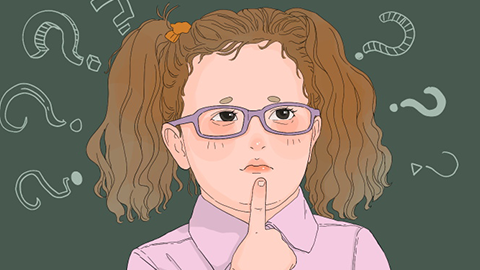How to Restore Vision for Nearsightedness
Recovery of vision in myopia may be affected by improper eye usage habits, prolonged near-distance viewing, excessive eye axis elongation, anisometropia, glaucoma, and other factors. It can usually be treated by improving eye usage habits, wearing appropriate glasses or contact lenses, and medication. If vision continues to deteriorate or other eye discomfort occurs, timely medical attention is recommended. Detailed analysis is as follows:

1. Improper eye usage habits: Prolonged staring at computer screens, mobile phones, or other close objects, as well as incorrect reading posture, can cause the eyes to remain in a state of tension for extended periods, leading to myopia. It is recommended to adjust eye usage habits, such as taking a 5-10 minute break every 45 minutes of eye use, looking into the distance to relax the eyes, and maintaining correct reading posture.
2. Prolonged near-distance viewing: Engaging in near-distance viewing activities for extended periods, such as reading, drawing, or playing video games, can keep the eyes in a state of accommodative tension, increasing the risk of myopia. It is recommended to reduce the time spent on near-distance viewing, increase outdoor activity time, and allow the eyes sufficient rest and relaxation.
3. Excessive eye axis elongation: During childhood and adolescence, if the eye axis elongates too quickly, it may exceed the normal range, causing an increase in myopia. Symptoms may include blurred vision. Regular monitoring of eye axis length is necessary, timely adjustment of glasses prescription, increased outdoor activity time, and reduced near-distance eye use are recommended.
4. Anisometropia: A significant difference in refractive power between the two eyes can lead to visual imbalance, potentially inducing or worsening myopia. Accompanied by binocular visual incoordination, symptoms such as headache and eye fatigue may occur. Appropriate glasses or contact lenses should be worn to adjust the refractive power of both eyes and promote binocular balance; visual training should be conducted to enhance binocular coordination.
5. Glaucoma: Glaucoma may be associated with multiple factors such as elevated intraocular pressure, genetic predisposition, and developmental abnormalities, which can impair the eye's accommodative function, leading to myopia, and may also cause symptoms including headache, eye pain, and nausea. It is recommended to use medications such as brinzolamide ophthalmic solution, brimonidine tartrate ophthalmic solution, and pilocarpine nitrate ophthalmic solution under medical guidance.
It is recommended to maintain proper eye hygiene and habits in daily life, undergo regular eye examinations, and promptly detect and address myopia-related issues.





